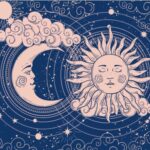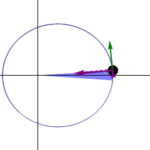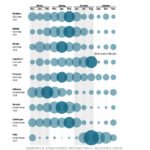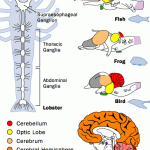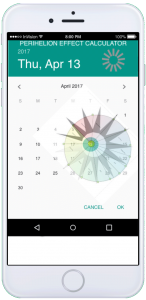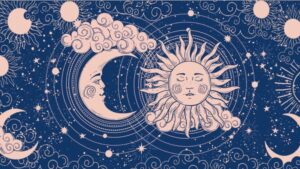New Research confirms that birth month has a marked effect on which diseases an individual may be predisposed to though out life.
It seems that fetal development is somehow affected by the time of conception. Demonstrable clusters of disease are associated with certain months and seasons.
People who are born in December are quite possibly healthier than the rest of us–and a lot healthier than those born in March. Medical experts from a variety of prestigious research institutions, including Stanford University, Southwest Missouri State University, and Stanley Medical Research Institute in Bethesda, Md., have independently found a link between the month in which you were born and a predisposition to certain illnesses, reports ABC News. If there is any explanation between birth month and disease it is most likely environmental, although no study has been able to prove a definitive cause-and-effect relationship. For example, fetal exposure to a virus in the second trimester of pregnancy when neurodevelopment begins may be linked to schizophrenia.
What diseases and disorders are most common for each birth month?
ABC News compiled this list:
- JANUARY Alzheimer’s, schizophrenia, respiratory syncytial virus
- FEBRUARY Alzheimer’s, schizophrenia, bipolar disorder, epilepsy
- MARCH Alzheimer’s, schizophrenia, autism, narcolepsy, Hodgkin’s disease, multiple sclerosis, bipolar disorder, epilepsy
- APRIL Leukemia, dyslexia, learning disabilities, multiple sclerosis, Parkinson’s disease, bipolar disorder, epilepsy, ALS
- MAY Dyslexia, learning disabilities, multiple sclerosis, ALS, Parkinson’s disease
- JUNE Anorexia, diabetes, dyslexia, learning disabilities, multiple sclerosis, ALS, Parkinson’s disease, and celiac disease
- JULY Diabetes, celiac disease, dyslexia, learning disabilities
- AUGUST Diabetes, celiac disease, autism, Crohn’s disease
- SEPTEMBER ADHD, asthma
- OCTOBER Asthma, eczema
- NOVEMBER Asthma, eczema, respiratory syncytial virus
- DECEMBER Respiratory syncytial virus
The medical experts agree that while there appears to be a pattern between birth month and disease, none of this is a prediction for what will happen to specific individuals. In addition, more research is needed to figure out how a person’s birth month actually influences his or her health.
———-
Seasonal rhythms in physical and mental health have been observed to exist since at least 400 BC, when Hippocrates stated
“Whoever wishes to investigate medicine properly should proceed thus: In the first place to consider the seasons of the year and what effect each of them produces“.
A variety of rhythms are affecting a human’s everyday life. For example, human life is greatly influenced by environmental cycles, such as day and night oscillations, tides, calendar months, lunar periodicity, and seasons of the year (Hyman 1990). The word “rhythm“ is defined in many ways depending on, whether it is used to describe music, speech, rhymes, dance, and mathematical or biological functions. In all cases a rhythm may be defined to be a flow, movement or procedure characterised by a basically regular recurrence of elements or features (Pauly 1980).
There is a broad spectrum of rhythms that operates simultaneously within a human’s biological processes, for example the heart rate and the menstrual cycle. These rhythms are called endogenous, because they arise from within the human organism. Simultaneously, there is a broad spectrum of external rhythms in the natural environment of a human. These rhythms are called exogenous, because they arise from outside the human organism. Many of these rhythms have specific phase relationships with each other, which means that they interact and synchronise each other (Haus et al. 1980, Pauly 1980).
The studies on the seasonal and other rhythmic patterns in mental disorders and their associated features are mainly based on the methodology of two scientific disciplines – psychiatric epidemiology and chronobiology. Psychiatric epidemiology has applied a variety of methods and designs of epidemiology to examine causal hypotheses relevant to the aetiology of mental disorders, whether they are social, psychological or biological (Tango 1984, Pickles 1998). Epidemiologists have been interested in cyclical clusterings of an illness over time such as a seasonal variation, because it may suggest causality due to specific factors, usually with emphasis on environmental factors, as for example with the occurrence of certain infectious diseases (Smolensky 1987). On the other hand, biological rhythms and their mechanisms are the main topic of the science of chronobiology (Halberg 1980). To chronobiologists, the cyclical clustering of illnesses points to the possible contribution of biorhythmic phenomena in the occurrence of human diseases and/or the contribution of both exogenous and endogenous cyclic phenomena (Smolensky 1987).
Although epidemiologist have studied rhythmic patterns in human diseases, mostly in terms of the prevalence or incidence, they have been criticised for not having sufficiently well enough considered relevant biorhythmic phenomena in their pursuits (Smolensky 1987, Smolensky & D’Alonzo 1988). However, recent studies have shown that there is an increasing tendency to highlight the role of seasonally regulated environmental factors on internal biological processes in seasonality studies of mental disorders (Fossey & Shapiro 1992).
The most popular method to examine seasonal or other cyclic patterns of events has been to investigate them with data aggregates of monthly or seasonal values of events (see, for example, Kevan 1980, Chew & McCleary 1997). In addition, seasonal trends have been analysed, for example, according to the days of a week (Massing & Angermeyer 1985, Nakamura et al. 1994, Joukamaa 1995), times of a day (O’Donnell et al. 1992, Schmidtke 1994, Joukamaa 1995, Joukamaa 1997), phases of the lunar cycle (Martin et al. 1992), dates of birth (Baker & Lester 1986, Lester 1986) and daylight saving time changes (Shapiro et al. 1990). Some investigators have compared suicide rates between weekdays and weekends (Zung & Green 1974, Pirkola et al. 1999b) and the days of major national holidays or a period around them (Zung & Green 1974, Jones & Jones 1977, Lester 1979, Phillips & Wills 1987, Nakamura et al. 1994, Jessen et al. 1999b). Birthdays associated with the timing of an event, like a suicide, has also been examined (Nakamura et al. 1994). Phillips et al. (1999) compared the number of deaths of the first week of a month with the number of deaths in the last week of the preceding month.
-
introduction to perihelionist
http://vimeo.com/user28870702/%20perihelion-introduction -
The Power of Perihelion
We are all familiar with the idea of holiday stress. That feeling that time is going by faster and faster from Autumn until New Years. Sometimes it is a feeling of losing control, insomnia or the surreal feeling of losing your... -
Virus Seasonality
Why do dozens of diseases wax and wane with the seasons—and will COVID-19? Scientists are unraveling why each pathogen has its own calendar Different diseases have different patterns. Some peak in early or late winter, others in spring, summer, or fall. Some... -
Seasonality and the Corona Virus
There is currently a lot of speculation about the seasonal cycle of the Corona virus. In fact because it is a Novel virus there is no way at all to predict if 'tempreture variations' will have an effect on slowing... -
Introduction to Chronobiology
ChronobiologyChronobiology is a field of science that examines periodic (cyclic) phenomena in living organisms and their adaptation to solar and lunar related rhythms.[1] These cycles are known as biological rhythms. "Chrono" pertains to time and "biology" pertains to the study,...
